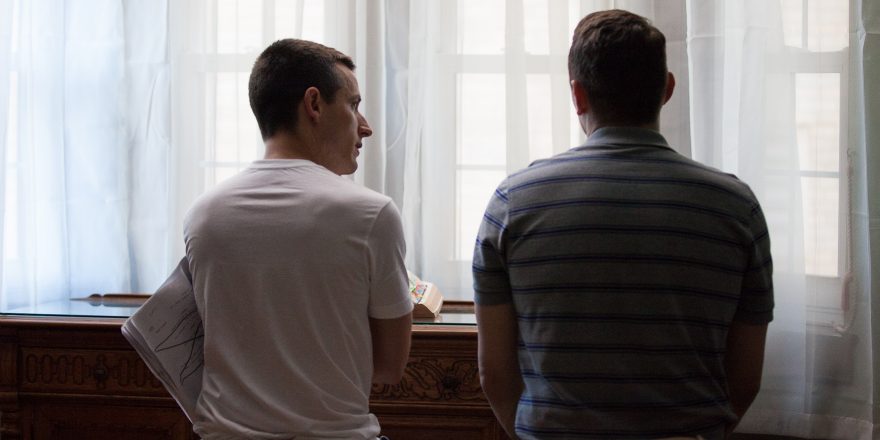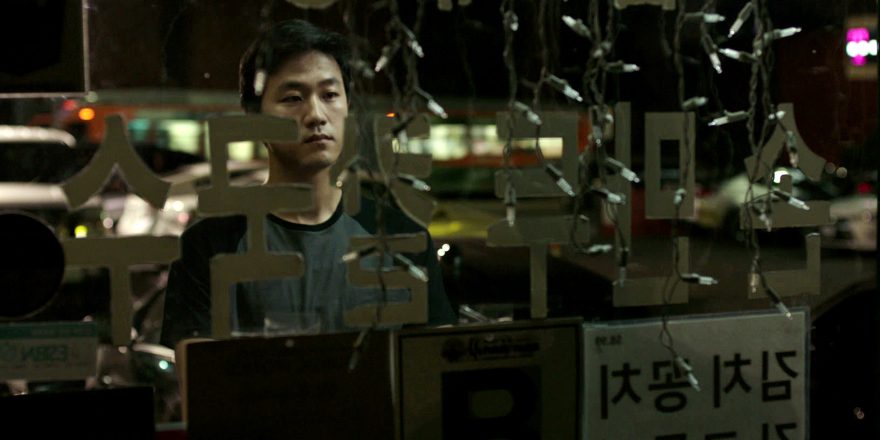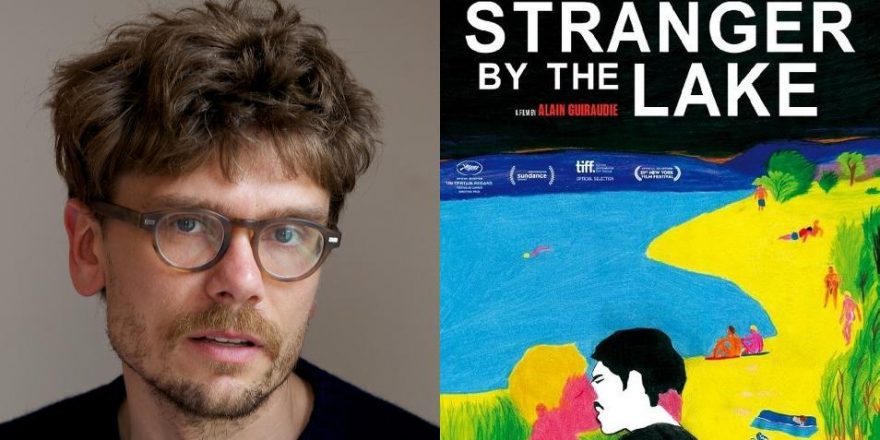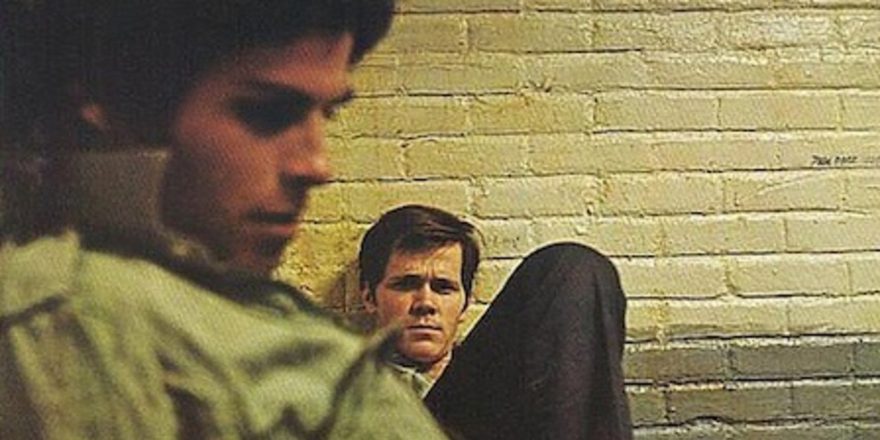“All plays, if they’re any good, are constructed as correctives … That’s the job of the writer. Holding that mirror up to people.” Master playwright Edward Albee was one of my greatest influences when I studied playwriting at NYU’s Tisch School of the Arts years ago, and this quote about the job of the writer and the purpose of writing drama rings true to me to this day. I interpret the Albee quote in a couple of ways – first, he was speaking to the need for the writer to challenge the audience by showing them parts of themselves that they don’t comfortably acknowledge. To me, he was also stressing the need to present the truth as the writer knows it, regardless of the way that truth has been portrayed previously. A great reminder to myself – write now.
As I began writing my film Akron, I knew I would be focusing on two young gay men falling in love in the Midwest. The challenge was to portray it in a new way, in a way that reflected the reality as I see it, as I imagine it, as I know it to be. How could I tell a story about gay love at a time when more and more of us are out and accepted by family and friends, when we can get legally married, yes even in Ohio? What would happen if I wrote about gay characters not focusing on what makes us different but instead what makes us human, just like everyone else? How could I write about love now?
Inspiration struck me one night at the Metropolitan Opera, watching a production of Verdi’s Il Trovatore. The classic scenario of two houses against each other because of fate was the perfect structure in which to create my story. I could write about two out and accepted, healthy, well-adjusted 18-year-old gay men – that would be the starting point – and set them in a drama where the conflict had nothing to do with the fact that they are gay. Is it a truthful depiction of two young gay men in the Midwest today? To me as the writer, absolutely yes.
Telling a story from my now was exciting for me. While writing scenes with two young men meeting, dating and falling in love, I didn’t bind myself to the “gay” themes familiar in films with gay characters: the coming-out story, the gay-man-falling-for-a-straight/closeted-guy story, the dad/mom-just-can’t-deal story, the no-one-understands-me / homosexuality-as-depression story. This new and liberating approach allowed me to get to know my characters on a deep personal level. (If you’ve watched a lot of gay films, you would have to agree that the majority of lead gay characters are inert. In attempts to show the very real, harmful effects of homophobia, filmmakers often create lead characters who, in their very conception, are defined by the same limits that are the result of homophobia and for whom the audience can only feel pity.) I made a conscious decision to focus on universal themes of romantic love, familial love, loss, grief, loyalty and forgiveness – which, of course, being universal, are by definition also “gay” themes. And it made all the difference.
I wasn’t projecting ideas onto characters but instead listening to them as they told me their stories. My protagonists, Benny and Christopher, became fun to be around, quirky, active. They began to let me in on their personal interests, goals and hopes. The same is true of the straight characters. If mom and dad are not homophobic, if they are both accepting of their son as a gay young man, then it’s their other qualities that can be explored. What are the concerns of an accepting parent of a young gay son who is falling in love for the first time? Again, I found that the more I was open to the complexity and mystery of the inner lives of the characters, the more dramatic possibilities presented themselves. The process of writing became more expansive and unexpected moments appeared.
My directing and producing partner Sasha King, the brilliant actors and the creative team we assembled to create Akron were all drawn to the project because they related to the now of the script. They believed in the same reality and were excited to help tell the story.
As it turns out, audiences too were excited by the now of Akron. The film has screened at LGBT and general audience film festivals in the States and abroad, and what quickly became clear was just how personally folks related to the movie. They recognized and appreciated a new, fresh perspective. They were surprised to not be confronted with negative aspects of themselves, as Akron unapologetically assumes the audience to be accepting – it presents a world where this is a basic fact. While watching the movie, audience members experienced a sort of shock of self-recognition that they were a lot further along in their acceptance of love between gay men than they were normally allowed to express/show support for. “Holding up the mirror” to the audience revealed not deep dark secrets but inherent identification, even compassion.
LGBT audiences of Akron, often with a sense of relief, realize they don’t need to gird themselves against being once again forced to confront themes of shame and homophobia. Instead they can relax and consider universal themes. When we fall in love, we don’t fall in “gay love.” The old standard identifiers of what makes gay characters “gay” on film are outdated and don’t allow us to tell the fascinating, exciting and profound stories of what it means to experience life from the perspective of a gay person now. A gay man of color in his forties who saw the film in Chicago told me after a screening, “That’s how it is. That’s how we actually behave.”
Straight people who watch Akron are disarmed by the fact that they are not relegated to the role of homophobic antagonist and instead get to relate to all the characters, regardless of sexuality. They cry with the gay characters and not merely for them. They feel empathy, not just sympathy. In Cincinnati, a straight, white woman in her fifties, who worked as an usher at the theater, came up to me after the screening to say, “This was the first time I’ve ever watched a gay movie. I was so rooting for those boys to stay together.” A straight man in Columbus told me that from his perspective it was “not really a gay movie” – how could it be if he empathized with the characters? Up on the big screen, two young men undressed each other and kissed often and unapologetically. They shared dreams, they laughed, they struggled through difficult situations. They even fell in love.








